Properly executed design and installation of networks outdoor sewerage determines the duration and quality of their operation. The main provisions and rules for the construction and repair of an external sewer network are determined by SNiP 2.04.03-85. The document regulates full cycle works on the device engineering system from the installation of the pipeline to the construction of treatment facilities. SNiP sewerage external networks and facilities will help you choose optimal material and build an efficient wastewater and rainwater disposal system.
What is outdoor sewage
External sewerage includes branched pipelines and system elements necessary for transportation Wastewater from residential buildings and other facilities to wastewater treatment plants. The design of the engineering network is carried out simultaneously with the preparation of water supply plans. Systems are interconnected by the need to maintain a balance of water consumption and disposal. Installation and maintenance of urban outdoor sewerage is assigned to public utilities. service autonomous sewerage in private houses, the owners themselves are in charge.
There are two ways to transport wastewater:
- non-pressure or gravity;
- pressure, requiring the installation of pumping equipment.
Sewer types
To ensure the safety of the functioning of external sewerage, SNiP offers several ways:
- duplication of communications - providing the possibility in case of an accident to switch the flow to a parallel pipeline or channel;
- reliable power supply, availability of an alternative (backup) source;
- margin when designing network bandwidth
Attention. When installing sewer facilities, a certain sanitary zone to construction sites of residential and public buildings.
Block diagrams
According to SNiP, external sewage is divided into several systems according to the laying method:
- Combined - according to this installation scheme, all drains - domestic, storm, melted - are sent to one sewer or container.
- Separate - the system is arranged so that household wastewater and melted (rain) water are transported through various pipelines and enter various treatment facilities or drives.
- Semi-separate wastewater and storm sewer are sent along different highways to one container.

Alloy scheme
Attention. It is forbidden to discharge wastewater untreated to established standards into water bodies.
Sewer system classification
outdoor engineering Communication arranged in different places and have their own purpose.
Yard network - used to service one building. It consists of the following elements: pipes of small diameter (150 mm), outlets of the building, intake and manholes. This concept is applied to a system associated with central sewerage, it is not used for standalone system.
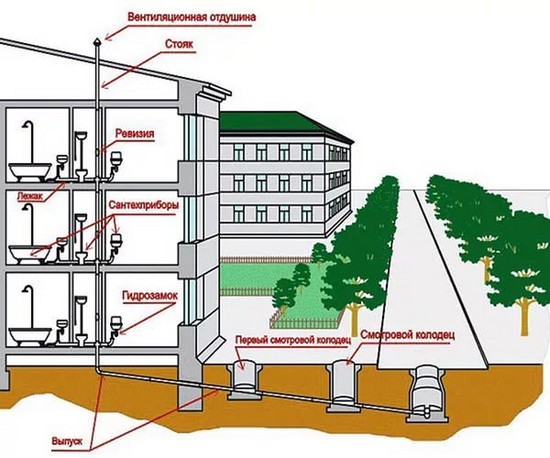
Yard network
Intra-quarter - the network is arranged inside the quarter, it consists of the same elements as the yard.
Read also:
Toilet options for giving without smell and pumping
The street network is designed to transport wastewater collected from all quarters. Such a pipeline is called a collector, its function is to collect wastewater and divert it to a pumping station or treatment plant.
Attention. Ground laying of a sewer pipeline in settlements is not allowed.
Schemes of drainage networks
Depending on the features of the terrain, one of the external drainage schemes is selected:
- perpendicular - used for rain sewer collectors for the speedy transportation of water to the general stream;
- zone - a rare option applied to objects with a significant difference in height, a pump is installed in the lower manifold;
- cross - the main collector is installed along a river or other body of water to intercept sewage;
- radial - wastewater is sent to various treatment facilities.
Components of the external sewer system
The engineering network consists of several main parts:

The choice of a method for discharging household and rainwater depends on a whole list of factors that are taken into account at the design stage:
- properties and nature of the soil;
- climatic features, such as the depth of freezing;
- volume of transported effluents;
- level of occurrence ground water;
- distance from the point of release from the building to the treatment plant.
Attention. The smallest allowable slope of the pipeline depends on the minimum speed of the sewer flow.
The choice of material for the pipeline
The materials used for the installation of lines and channels must be resistant to aggressive environments and the effects of abrasive particles contained in the liquid. To prevent gas corrosion of the upper part of the collector, ventilation is installed to prevent gas stagnation.
SNiP external sewerage provides for the use of pipe networks from the following materials for installation:
- polyethylene;
- polyvinyl chloride;
- polypropylene;
- steel;
- asbestos cement;
- cast iron;
- reinforced concrete.

Polymer pipes
The size of the rain and common alloy street system is 250 mm, the intra-quarter system is 200 mm.
Speed
The SNiP contains tables that determine the speed of wastewater movement depending on the size of the pipeline or tray. These indicators help to avoid silting of sewer networks. The flow contains suspended particles, which, if the speed is insufficient, settle on the surface of the line.
Basic calculation data:
- diameter 150-250 mm - 0.7 m / s;
- 600-800 mm - 1 m / s;
- more than 1500 mm - 1.5 m / s.
The lowest speed of movement of clarified wastewater through the trays and pipes is 0.4 m/s. The maximum value of the speed of transportation of wastewater:
- for metal and plastic pipes - 8 m / s;
- for concrete and reinforced concrete - 4 m / s.
For rainwater drainage, the indicators are:
- metal and plastic pipes– 10 m/s;
- concrete and reinforced concrete - 7 m / s.
Pipeline slope
One of the basic rules when laying a pipeline is compliance with the slope norm. For systems where the fluid moves under the influence of gravitational forces, this parameter is of decisive importance. The negative consequences of installation errors in the direction of decreasing or increasing the slope lead to malfunctioning of the network, blockages and breakdowns.
Attention. The standard indicator is calculated for 1 running meter pipes.
For autonomous sewer pipes that are smaller than central networks, the following standards apply:
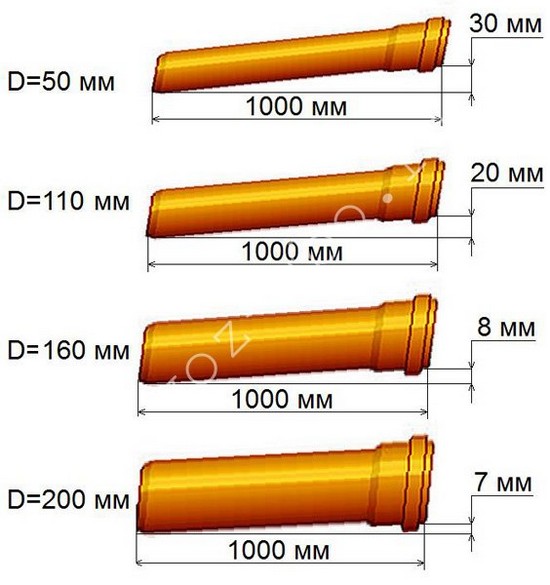
IN special conditions associated with the terrain, a decrease in the slope is allowed:
- pipes 150 mm up to 0.008;
- pipes 200 mm to 0.007.
Rain gutter joins common system with a slope of 0.02.
Network depth
The minimum depth of the sewer pipeline depends on the heat engineering calculation. Also take into account the practice of exploitation of engineering networks in the area. Pipes are laid 0.3-0.5 m below the freezing point of the soil. The maximum depth depends on several factors:
- pipe material;
- type of soil;
- pipeline diameter;
- laying method.
Heavy downpours and spring thaw are a real problem for many homeowners. After all, the site after the rain turns into a kind of swamp, and regular flooding of the foundation and walls contribute to their destruction. Consider the main points of the construction of such a device as a storm sewer - SNiP, GOST and other requirements that should be taken into account.
What is a storm sewer? Storm sewers are called complex network engineering, which serve to collect and remove moisture from the drained area, which falls in the form of precipitation. For the construction of these schemes, one should be guided by the requirements of SNiP, which deal with the construction of external sewerage networks.
The SNiP, which regulates the standards that external sewer networks must comply with, contains the necessary formulas for carrying out calculations when designing the system, indicates the requirements for materials, the depth of the pipes, and others. important points construction.
Types of storm sewers
There are two types of stormwater:
- Point system.
- Linear system.
Sewerage storm point type
Dot schemes are networks of storm water inlets and pipes connecting them. In order to assembled circuit was durable, safe and effective, specifications for storm sewers provide for installation on storm water inlets protective grilles, as well as the installation of special filters - sand traps.
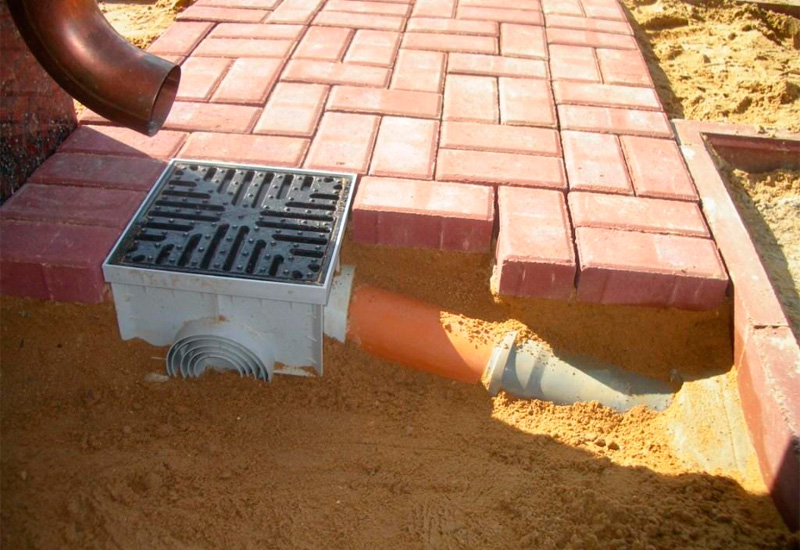
Storm sewer linear type
A linear scheme is a network of channels that are designed to collect and transport water. According to the requirements of SNiP - storm sewers are mounted so that there is a slope towards the main collector.
Storm sewer closed type It consists of a network of storm water inlets connected by pipes laid at depth, through which water is discharged into the collector. To maintain and control the operation of the system, it includes inspection wells with a diameter of 1 meter.
Advice! All aspects that will need to be taken into account when developing a project and building a storm sewer are set out in the regulatory document SNiP 2.04.01-85.
If, for some reason, when laying pipes, it is not possible to withstand minimum slope, then the system includes pumps for pumping liquid, since it cannot move by gravity.
Storm sewer elements
As a rule, the following elements are included in the sewerage network:
- Storm water inlets. This is one of the important elements of the system, the main function of which is the local collection of water from the surface of the earth.
- Door pallets. This is an analogue of storm water inlets that are installed in front of entrance groups at home or at the gate.
- Trays or gutters. Elements installed in ditches to divert water. So that water can move along them by gravity, a slight slope of the storm sewer is provided, directed to the collector.
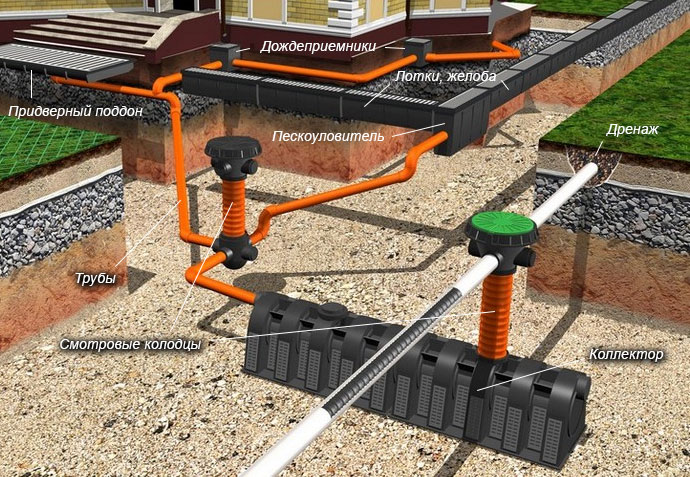
- Pipes. This element performs the same function as the trays, but is not laid in surface trenches, but underground.
- Sand traps. These are filter elements that prevent debris and soil particles from entering the drainage system.
- Viewing wells. Elements necessary to control the operation of the system.
Calculation of storm sewers
Before starting the construction of a storm drain, you need to make the correct calculation of the storm sewer, for this you need to know:
- Average rainfall for this area.
- The runoff area, that is, the area of roofs, platforms and paths with a waterproof coating.
- Soil properties at the site.
- Locations of already built underground utilities on the site.
You can calculate what the diameter of the storm sewer should be using the formula:
Q = q20 x F x Ψ
Designations in the formula:
Q is the volume of water that the system will have to divert.
q20 is the intensity of precipitation.
Advice! This value depends on the climatic conditions of the area, you can find its value in the tables according to SNiP 2.04.03 - 85.
F is the area of surfaces from which water is planned to be drained.
Ψ is a correction factor that depends on the coating material of the site from which water is collected.
Advice! The correction factor for the roof is 1.0, for sites and paths covered with asphalt - 0.95, for concrete pavement- 0.85, for crushed stone coatings - 0.4 (and if crushed stone is treated with bitumen, then the coefficient will be 0.6).
Pipe depth
The question of what should be the depth of the storm sewer is widely discussed on construction forums. Meanwhile, a completely understandable answer is given in SNiP 2.04.03-85 - the minimum depth of storm sewers is determined by the experience of operating systems in this area.
Advice! Typically, when used in middle lane and the use of pipes with diameters up to 500 mm, 30 cm is taken as the minimum depth. In the event that pipes of a larger diameter are used for the construction of a system such as a storm sewer, their laying depth should not be less than 70 cm.
In order not to carry out complex calculations and not worry about possible mistakes, it is best to find out what the laying depth should be for people who are engaged in the construction of storm sewers in practice. You can ask neighbors if they have already finished building outdoor drainage and storm sewer networks, or check with construction organizations that work in the area.
Slope of storm pipes
In order to find out the minimum slope of storm sewers, you need to consider:
- Type of drainage;
- Pipe diameter;
- Surface coating.
When using pipes with a diameter of 200 mm, the slope should be 0.7 cm per meter of pipeline length. If pipes with a cross section of 150 mm were used, then the slope should be 0.8 cm per meter. In case of urgent need, in SNiP 2.04.03-85 there is a direct indication that in certain sections of the network the minimum slope can be slightly reduced:
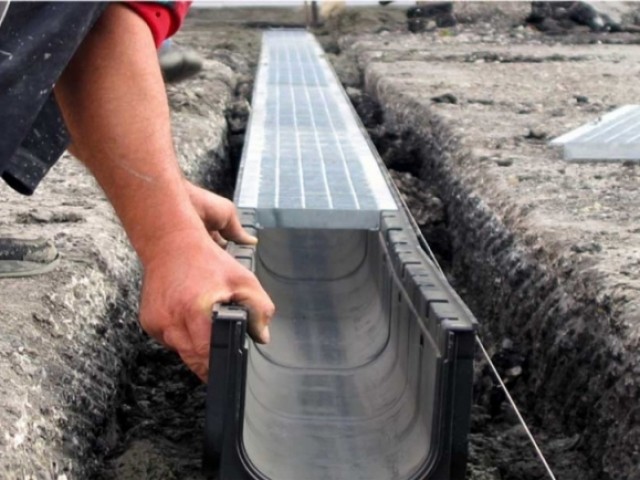
- up to 0.5 cm per meter when using pipes with a size of 200 mm;
- up to 0.7 cm per meter for pipes with a diameter of 150 mm.
Thus, if local conditions force it, you can "save" up to 2 mm per meter of pipeline length. Do not forget that SNiP regulates not only the minimum, but also the maximum slope of the pipeline. It should not exceed 1.5 cm per meter of pipe.
If you exceed the specified indicator, then the risk of clogging of the structure will increase. The fact is that if the slope is more than normal, the water quickly leaves, and the sand contained in it settles, as a result inner surface pipes silt up quickly.
Storm sewer construction
In general, installation work on the installation of storm drains is carried out in the same way as when laying external pipelines of a conventional sewer.
Selection of pipes for the underground part of the pipeline
If external storm sewer networks are installed, SNiP allows the use of the following types of pipes:
- Asbestos-cement;
- steel;
- Plastic.
Asbestos cement is traditional material used for the construction of external sewerage pipelines, including storm water. The disadvantages of the material include its high fragility and significant weight (a meter of a pipe with a diameter of 100 mm weighs more than 24 kg). Steel pipes they have much less weight (a meter of pipe weighs about 10 kg), but they are prone to corrosion, so it is unprofitable to use them for the construction of stormwater drainage.
IN Lately plastic pipes are used for the construction of storm drains. They are light (a meter weighs no more than 5 kg), but durable and resistant to corrosion. In addition, they are easy to connect, it does not require welding. Can be used:
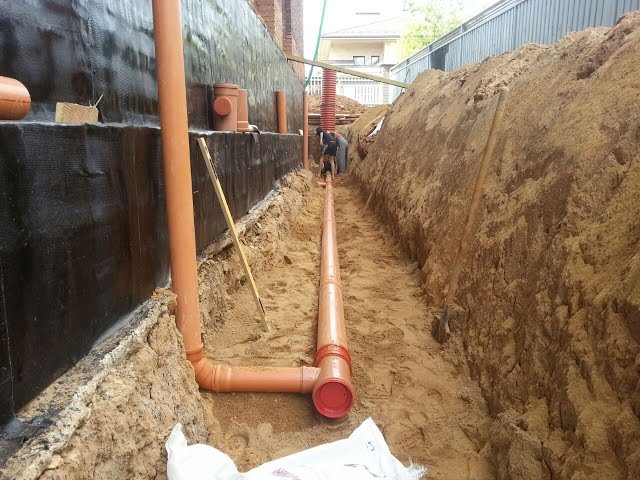
- PVC pipes, if external networks are installed, then for their construction it is necessary to use a special type of pipes, they are painted orange;
- Multilayer polymer pipes. To date, this is best option. These pipes have a smooth inner surface, so there is no hydraulic resistance.
Installation of the roofing part
Work goes like this:
- Openings are made in the ceilings for the installation of storm water inlets, all connections are carefully sealed.
- Branch pipes are strengthened during the construction of a point system or trays - during the installation of a linear storm drain.
- Install drain risers or pipes.
- A water discharge unit is assembled into a collector or outlet into tray systems.
- All devices are attached to walls and floors with clamps. Places for installing clamps are planned in advance, not forgetting to observe the recommended slope values.
Underground laying
- Installation begins with the installation of trenches. During the construction of systems such as storm sewers, the depth of laying is most often determined not by the depth of freezing, but by the experience of operating systems at the construction site.
- Trenches are dug with a slope, that is, their depth should gradually increase.
- At the bottom of the trenches, a sand cushion is made, the layer height is 20 cm.
- A pit is being prepared for the installation of the collector.
- Pipes should be laid in the prepared ditches, the pipes are connected to each other and connected to the collector using conventional fittings.
- If the sewer network consists of a single branch with a length of more than 10 meters, then in its middle it is worth planning the installation of a manhole. Such wells should be placed at the branching sites of networks.
- Sand traps are installed at the junction of water intake gutters and stormwater pipe systems.
- Now it remains to backfill the trenches, and cover the open structures (trays) from above with bars.
The need to create security zones
Few people know that there is such a thing as a sewerage security zone, including storm water, and meanwhile, SNiP provide that a security zone of a certain size should be organized near the pipes. So, the stormwater protection zone provides for a 5-meter indent from the pipe walls in each direction. Secured territory is a place where it is forbidden:
- Build permanent or temporary structures.
- Set up garbage dumps.
- Arrange parking lots.
- Plant trees or bushes at a distance of less than three meters from the pipe.
- Block free access to manholes.
So, the installation of a rainwater drainage system is a necessary measure for the improvement of the site. When constructing such systems, it is necessary to strictly comply with the requirements and rules that are formulated in regulatory documents - construction and sanitary rules.
External sewer networks, according to SNiP, are used both in private country houses as well as in urban apartments. Such a sewage system is very convenient, easy to operate and environmentally friendly. For its installation, you must familiarize yourself with the rules of use according to SNiP
Features and types of sewerage systems SNiP
These sewer networks are a branched pipeline that delivers wastewater from premises (residential and non-residential) to special containers. In order for wastewater to fall into the tank by gravity, water pipes are installed at a slight slope.
The second option for the system operation involves the installation of pressure networks or the connection of a special pump.
Types of sewerage systems according to SNiP
Depending on the purpose, sewer networks are divided into:
- Household, which is divided into two types: central (serving the entire village) and autonomous (for one or more houses).
- Industrial (industrial treatment facilities).
- Stormwater, providing drainage after rain.
All of these species are divided into two subspecies:
- Outdoor (pipes are located on the street, including treatment plants and facilities).
- Internal (everything that is inside the room).
According to the method of installation and laying of the SNiP pipeline, external communications are divided into several types:

In addition, sewer networks differ in other ways.
SNiP external sewerage systems
Communications for outdoor use can be located in various places and differ in purpose. There are several types of sewer networks for outdoor use:

Laying methods water pipes determined on a case-by-case basis. This depends on several factors, such as bends and turns along the route, the level of groundwater penetration, etc. It should be remembered that sewer pipes are in any case laid with a slope that varies depending on the diameter of the pipe. In some cases, it may be necessary to install a pump, drainage or manhole.
Components of the external sewage system
The sewerage network consists of various elements that allow the transportation of wastewater to the treatment plant. In general, the sewer includes the following details:

In addition, for the full operation of the sewer, it is possible to use other additional elements.
Material for the manufacture of sewer pipes
The service life of the pipeline also depends on the choice of material. To date, the rules provide for the use of materials such as:
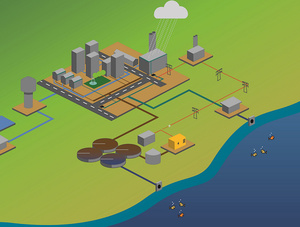
In rare cases, glass or ceramic pipes may be used.
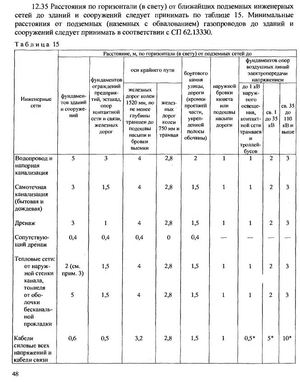
Since wastewater with all sewage instantly comes from the system internal sewerage to the outside, the latter must cope with a huge amount of sewage at the same time.
Installation of an external sewage system
To ensure the reliability and long life of the sewer system during its installation, a number of rules must be observed.
SNiP requirements are based on such factors as:
- soil properties;
- climate features;
- ground water level;
- average wastewater volume;
- distance to the nearest pumps and treatment plants.
It is also very important to observe the level of the slope of the pipe to ensure the unhindered passage of wastewater by gravity. According to the requirements of SNiP, pipes must be laid at a certain slope towards the well. The angle of inclination is determined by the diameter of the pipe and is 2–3 cm per meter of pipeline.
Do not try to make a big slope: this, of course, will help to quickly drain a huge amount of wastewater, but it can lead to clogging of the system, as solid particles will linger in the pipe.
According to the requirements of SNiP, the size of the pipe for external sewerage of several houses included in the system must be at least 20 cm, and for one country cottage - 10–11 cm. When planning installation waste system, additional factors that affect performance in the future should be taken into account.
 Before proceeding directly to the installation of the sewerage system, it is necessary to carry out preparatory work: study the features of the soil, calculate all the elements, lay the route of the pipeline.
Before proceeding directly to the installation of the sewerage system, it is necessary to carry out preparatory work: study the features of the soil, calculate all the elements, lay the route of the pipeline.
The first step is to determine the location of the collection well, where the wastewater will flow. This takes into account the type of water collector: a septic tank that can not only accept, but also dispose of pollution or a conventional well.
The ideal location for a septic tank or well would be the lowest place in the pipeline area. If it is planned to clean the collection by means of a cesspool machine, it is better to place the well closer to the roadway for its comfortable maintenance.
A trench is dug, which, if necessary, is supplied with additional details. Pipe joints should be carefully fixed and treated with sealant. In order to prevent freezing of the water supply in the winter, it is necessary to carry out thermal insulation. The sewer system is then connected to a treatment plant or collector and a test run is made.
The ditch is filled up and rammed only after a complete check of the entire structure as a whole.
Requirements for pipeline parts:
- The resistance of the material to corrosion or providing its additional protection.
- The presence of a base for the installation of the pipeline, taking into account the characteristics of the soil.
- Mandatory use of valves, plungers and other additional elements for pressurized sewer networks.
- Installation of manholes only in places of slopes, intersections and bends of the water supply. The size of the well is determined by the diameter of the pipe and its length. Wells must have manholes, stairs and railings.
- Rainwater receivers should be installed near pedestrian crossings, lowlands and places of accumulation a large number of people.
SNiP requirements for the sewerage of a private house
Sewerage in apartment buildings taken for granted and almost invisible. Another thing is the withdrawal of wastewater in a private house. Cesspools and street toilets are already considered a relic of the past, and many owners of country cottages are thinking about building a sewer system in their area. In order to independently mount and connect the sewer pipeline, you need to know the building codes and regulations, compliance with which will ensure a long and uninterrupted operation of the system.
Sewerage is laid immediately during the construction of a new house, but also an old one, with outdoor toilet it is quite possible to equip with apartment amenities.
 Private houses are divided into two types: with the ability to connect to the central sewer system and those that cannot be connected.
Private houses are divided into two types: with the ability to connect to the central sewer system and those that cannot be connected.
The procedure for conducting intra-house installation work in this case, it will be the same, the only difference is in the removal of wastewater from the premises.
The sewerage system of a private house, as well as an apartment building, consists of sewer pipes and stand connected to each other. Waste water from toilets, bathtubs and sinks enters horizontal pipes and go down the riser to a sewage treatment plant or sewer. If the construction of the house is only planned, it is necessary to locate the kitchen and the bathroom next to the place where the sewer pipe exits the house. If the cottage is multi-storey, then for ease of installation of the pipeline, the bathrooms must be placed one above the other.
Installation of pipes and installation of plumbing
The toilet is connected to the vertical riser separately. To prevent drains from entering the pipes, the remaining elements should be located above the toilet.
To reduce noise levels, the risers can be closed in a drywall box or wrapped mineral wool. All necessary details are attached to the pipes with knee siphons, in which there is always a small amount of water, which blocks unpleasant odors system and prevents them from escaping.
Horizontal pipes that are under the floor, in the basement or basement, are connected to the riser with external pipes. Elements located outside the room should be well insulated to prevent them from freezing during the cold period. At the exit from the house, all pipes are assembled into one and connected to the external sewerage system. Clamps are used as fasteners.
In order to prevent the appearance of specific odors when draining water, ventilation should be installed: the vertical riser is brought out to the roof, and its upper part must be well strengthened and not closed, but only protected from debris and precipitation. An aeration valve can also be installed to protect against odors.
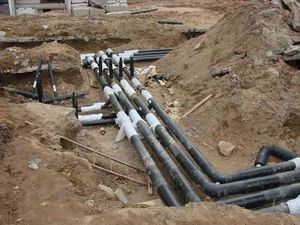 A trench is being prepared, the depth of which is determined by the level of soil freezing in a particular region. A sand cushion is necessarily laid at the bottom of the ditch, on which drainpipes are mounted under a slight slope. If, due to the characteristics of the soil, it is impossible to dig a deep trench, the pipeline should be carefully insulated.
A trench is being prepared, the depth of which is determined by the level of soil freezing in a particular region. A sand cushion is necessarily laid at the bottom of the ditch, on which drainpipes are mounted under a slight slope. If, due to the characteristics of the soil, it is impossible to dig a deep trench, the pipeline should be carefully insulated.
Private houses mainly have autonomous sewerage, which can be of 4 types:
- Dry closet. A convenient, but costly type of sewerage.
- Cesspool pit. Cheap, but very inconvenient to use.
- Septic. It is able not only to receive wastewater, but also to purify it independently.
- purification plant. Cleaning is done with the help of special bacteria. Quite effective, but at the same time - an expensive type of sewer system.
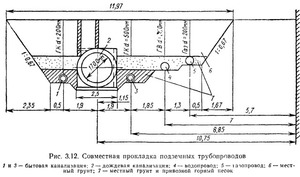 Each of these options has its pros and cons. Eg, cesspool it is better to install in areas that have a periodic nature of use.
Each of these options has its pros and cons. Eg, cesspool it is better to install in areas that have a periodic nature of use.
The cleaning station does not require permanent care, but its disadvantage is its high cost. Of the proposed sewerage options for a private house, the ideal would be a septic tank, which you can assemble yourself or buy ready-made.
So, following the rules of SNiP external sewer networks, and following the proposed recommendations, you can easily install a sewer system at home and thereby ensure comfortable living for yourself and your loved ones.
Properly designed and installed system outdoor sewerage will not create unnecessary trouble in its operation, will provide not only comfort and all kinds of amenities for residents of certain houses, employees of offices and other buildings, but also a complete guarantee of sanitary and hygienic safety of human health.
That is why it is very important to follow all sanitary standards and rules (SNiP) established at the state level.
SNiP provide full relevant information on how to accurately calculate and create a project for external sewerage networks in order to avoid epidemics, contamination of drinking water and soil areas in their future operation as a result of sewage emissions, sewer pipe breaks and other emergencies.
Unlike internal sewer networks, which are located inside residential and non-residential premises, external ones are communications that stretch from the house to the tanks that store wastewater.
Such sewer facilities are installed both for city-wide building sites and for private houses where there is a slope for gravity flow of wastewater or pressure networks with pumping stations or sewage pumps are installed.
Citywide buildings are, as a rule, the department and service of city public utilities, and private buildings are serviced autonomously and independently.
In both cases, during construction or laying and installation outdoor system sewerage requires strict adherence to specially developed state sanitary and hygienic norms and rules.
According to the structure of the laying and installation method, sewer external networks are divided into the following systems:
- separate– the runoff of household and fecal sewage is separated from rain and melt water, flow down different pipes and collected in different containers;
- semi-separate- in this case, rain, melt and snow flowing through separate pipes domestic water collected in one sewer, where they are stored for some time, and then disposed of;
- common alloy- according to this scheme, effluents of all types flow down the same pipeline into the same sewer tank.
 Photo: combined sewer networks
Photo: combined sewer networks According to the type of location and purpose, sewers for external use are distinguished in such places:
- intra-yard and intra-quarter networks- tracing (pipeline laying along vectors, from point A to point B) of the entire sewage system is carried out along the walls of buildings at a distance of 3 m from their outer walls, using the shortest path to the collectors located on the streets. Such a concept as an intra-yard network is applicable only to sewers that are connected to centralized city systems, but does not apply to autonomous sewers;
- street is a whole branched different ways a system of pipelines and wells that run directly along the streets and provide transportation of wastewater to the center of the entire external sewer system - city sewers;
- collectors– Their role is to collect wastewater and, if necessary, redirect it to other collectors. For the most part, sewer collectors are located both on the territory of the sewerage basin and on its outskirts. A sewerage basin is a part of the territory bounded by watersheds, where sewer pipes lie, and sewage is transported either by gravity or by pressure;
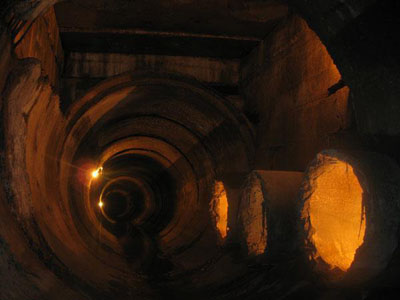 Photo: sewer network collectors
Photo: sewer network collectors - treatment facilities- the end point of wastewater shipment is treatment facilities, where water is purified and treated water is discharged into a reservoir, or for the use of industrial and household needs of large and small production facilities.
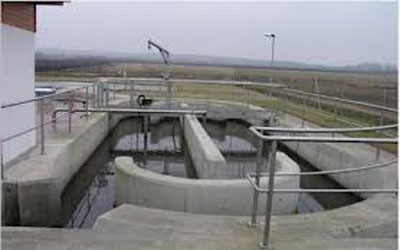 Photo: wastewater treatment plant
Photo: wastewater treatment plant There are also some options for the location and arrangement of the schemes for laying the external sewer pipeline themselves.
Differences in the schemes are formed due to the diversity of the terrain where sewer pipes are laid.
After all, turns and bends on the lines of laying pipes, the level of groundwater, which means supplying the system with inspection, drainage or revision wells and other specific subtleties, may depend on this.
We can distinguish the most basic schemes of external sewers:
- perpendicular circuit- the perpendicular is formed here due to the laying of sewer pipes or collectors perpendicular to the movement of water in the reservoir. This scheme effectively removes clean waters dirty;
- crossed circuit- collectors that are located on the territory of the sewage basin are installed perpendicular to the reservoir and are intercepted by the main or main collector, which is installed parallel to the river coastline. This scheme is used where there is too much slope towards a river or some other body of water, and where more thorough wastewater treatment is required;
- fan, or parallel circuit- in the case of sharp slopes towards the river, the external sewage pipeline is laid parallel to each other, but at a mandatory angle with respect to the reservoir. Such systems are also intercepted by the main collectors, which successfully divert wastewater away from settlements to wastewater treatment plants;
- zone, or belt scheme- this scheme allows you to divide the city sewerage into sections or zones, but at the same time it is impossible to let wastewater go to treatment facilities by gravity, therefore, pumping pumping stations are installed on the lowest intercepting collector;
- radial, or decentralized scheme- here, wastewater is directed in a non-centralized way and enters various treatment facilities. This scheme works very well only on flat terrain and large volumes of sewage entering the external sewer pipeline.
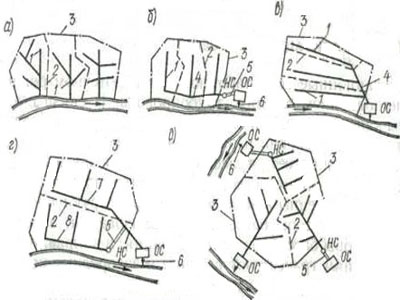 Photo: schemes of external sewer networks: a - perpendicular; b - crossed; c - parallel; g - zone; d - radial
Photo: schemes of external sewer networks: a - perpendicular; b - crossed; c - parallel; g - zone; d - radial All types and classifications of external sewerage differ from each other in the structure of construction, purpose, terrain conditions, volumes of wastewater and other parameters and factors that affect the layout and routing of certain types of sewers of its outer part.
Composition of networks
External sewerage systems have certain sections of pipelines, complex and simple designs all kinds of wells, slopes, transitions and turns in the laying of the pipes themselves, reservoirs, where there is a temporary accumulation or transportation of sewage, cleaning, and then the output of purified water to reservoirs.
By and large, external sewerage consists of the following structures, components and structures:
- pipeline - along which pipes of various lengths and diameters are used;
 Photo: sewer pipeline
Photo: sewer pipeline - wells - as a rule, inspection (revision), drainage, differential and rotary wells are involved;
 Photo: sewerage wells
Photo: sewerage wells - outlets to receivers - they are the ones that ensure the unhindered exit of wastewater from the pipeline to the tank;
- collectors are entire tunnels, which are huge pipes that provide enough space for accumulation and collection sewage water, as well as their subsequent distribution and transportation to treatment facilities or pumping stations;
- local treatment facilities are various septic tanks, aerators, biodisc equipment and other structures, the purpose of which is to purify wastewater and discharge it into reservoirs, rivers or use it for technical or, for example, agricultural needs;
- pumping stations - are not used in all external sewerage systems, namely, where a portioned supply of wastewater to treatment facilities is required;
- other elements are all kinds of components, additional mechanisms and other elements of the external sewer network.
Basic design requirements
As already noted, the need for strict adherence to all state norms and rules of sanitary and hygienic and construction order.
This is necessary in order to avoid violations and accidents that may occur in the further operation of a particular section of the external sewage system.
Important! Only when all SNiPs have been observed and all work has been done in good quality, then only the sewer network facility can be put into operation.
All these points concern not only the exact implementation of the rules and regulations by state or commercial structures, but also by individuals who independently lay the pipes of an autonomous sewer, or a sewer that is supplied from a cottage, a private house to a centralized sewer system.
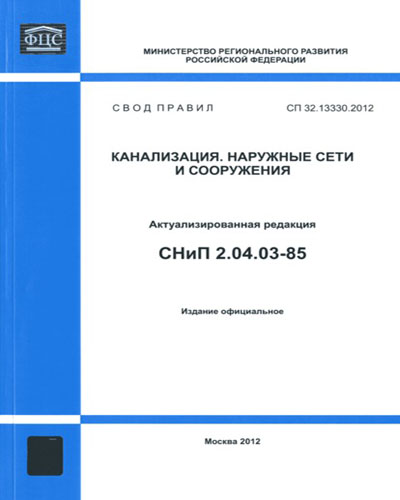 Photo: SNiP
Photo: SNiP Before proceeding with the design of any external sewer system, you must first determine the nature of the area on whose territory the sewer will be located, as well as its type: separate, semi-separate or combined.
The rules and norms stipulated by the Guest require strict compliance with the phased implementation of laying and installation of the sewerage system.
To begin with, preparatory excavation according to the project plan:
- trenching large diameter than the pipes themselves, in accordance with SNiP standards;
- compacting trenches or supplying them with "cushions" or any other covering elements;
- to avoid freezing, various heaters and deeper trenches are used.
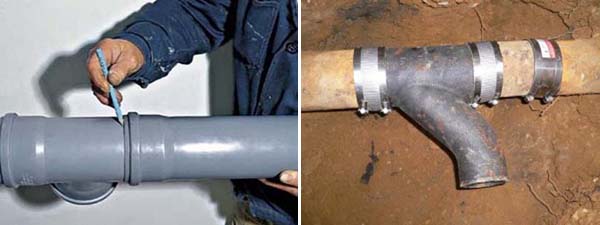 Photo: sealing the seams of sewer pipes with a sealant pipeline tie-in
Photo: sealing the seams of sewer pipes with a sealant pipeline tie-in After insulation, laying of the pipeline with all wells and other fittings, the system must pass all the relevant SNiP hydraulic tests and only then it is covered with soil and compacted.
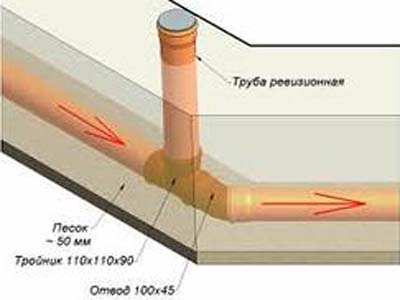 Photo: laying sewer pipes
Photo: laying sewer pipes Septic tanks
Structures such as septic tanks must be placed at a distance of 10 to 12 m from the foundation of a house or a well with drinking water.
These requirements must be strictly observed, otherwise sewage or fumes may enter the drinking water through the soil, which subsequently leads to the appearance of various infectious and bacterial diseases.
For installation and installation, cottage or country house need to dig out first large sizes pit.
Considering that modern septic tanks are almost all made of lightweight materials: plastic or fiberglass, it is necessary to prepare a concrete platform and fixing straps or reinforced concrete rings for it.
All this is done so that the septic tank does not "float", but remains fixed underground. All connecting pipes with wells must consist of anti-corrosion materials that are not exposed to the aggressive environment of sewage.
Thus, these pipes and wells will be able to last as long as possible.
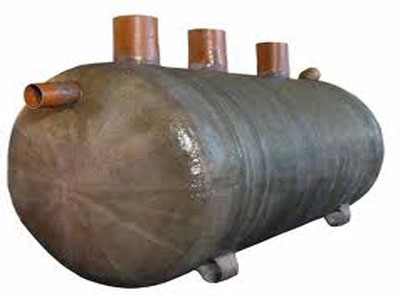 Photo: septic tank
Photo: septic tank The mechanism of operation of the septic tank also contains aerobic and anaerobic bacteria, with the help of which the wastewater entering the first chamber decomposes, forming water and sludge.
Then, the water, filling the first chamber to a certain level, overflows into the second chamber, and from there (if the septic tank is 2-chamber) into a perforated pipe, through the holes of which the purified water enters the ground, thereby not infecting the soil.
Biological Deep Wastewater Treatment
Modern solutions for efficient wastewater treatment have come to best solution is a biological deep wastewater treatment, which is carried out with the help of entire installations and structures using biodisks, where bacteria are present that work on the decomposition of sewage into water and sludge.
In the mechanism of the station deep cleaning the principle of operation of septic tanks is laid down, but only in an improved and modified version to such an extent that it cleans dirty wastewater by 98%.
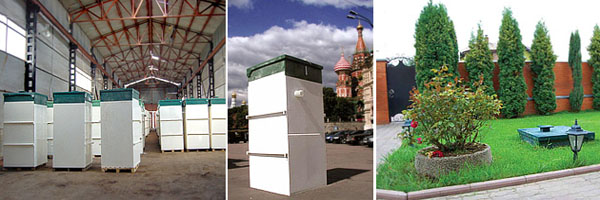 Photo: biological deep wastewater treatment
Photo: biological deep wastewater treatment It is good to install such a structure in private houses, dachas, cottages, where the centralized external sewage system is located far enough away and the installation of an autonomous sewer system is required.
Such a deep cleaning station is installed in almost the same way as a septic tank, only with the obligatory consideration of all norms and rules for external autonomous sewer systems.
Consequences and liability of non-compliance with SNiP for design, installation and laying
The legislation of the Russian Federation provides for appropriate penalties and liability for violations of SNiP for the installation and laying of external sewage.
Compliance with SNiP is checked by specially created commissions in the presence of suitable documentation.
The following persons are responsible for compliance with all rules and regulations:
- developers (customers) - are responsible for preparing the finished sewer network for operation, taking into account all personnel issues, ensuring the proper operation of equipment, setting up technological processes, development of design capacities within the time frame specified in the SNiP “Sewerage. External networks and facilities”;
- design organizations - are responsible for the correctness of all calculations, drawings and project plans for external sewer networks;
- research organizations - are responsible for all issued documents and digital data on climate, ecology in the region or locality where the external sewerage was laid;
- construction and installation organizations - are fully responsible for compliance with all norms and rules during the work and testing of the finished structure, prescribed in SNiP 2.04.03-85 “Sewerage. External networks and structures”.
In case of violations of the SNiP by any of the above persons, they are brought to administrative, disciplinary, criminal and other liability in accordance with the legislation of the Russian Federation.
All penalties are imposed on the perpetrators because their negligence, in failure to comply with all relevant rules and regulations, can lead or has led to disasters, epidemics, or any accidents associated with a violation of the sewer pipeline, blockage or any other breakdown.
All considered issues related to the preparatory and installation work on the design and installation of external sewer systems, able to shed light on the correct conduct of all installation and construction works in this type of activity.
This applies not only to the construction of a state-owned central outdoor sewerage system, but also to autonomous sewer structures.
Important! Any deviation from SNiP by any citizen who decides to take up self-laying sewerage, or by any organization or enterprise that installs an external sewage pipeline, can lead to catastrophic consequences, various diseases of the population or emergency breakdowns that will cause irreparable damage to the environment.
Video: how to arrange a sewer in a private house
(as amended by Change No. 1, approved by the Decree of the USSR State Construction Committee
dated 05/28/1986 N 70)
Entry into force
January 1, 1986
Developed by Soyuzvodokanalproekt (G.M. Mironchik - leader of the theme; D.A. Berdichevsky, A.E. Vysota, L.V. Yaroslavsky) with the participation of VNIIVODGEO, Donetsk PromstroyNIIproekt and NIIOSP named after. N.M. Gersevanov Gosstroy of the USSR, Research Institute of Communal Water Supply and Water Purification of the Academy of Public Utilities. K.D. Pamfilov and Giprokommunvodokanal of the Ministry of Housing and Communal Services of the RSFSR, TsNIIEP of engineering equipment of Gosgrazhdanstroy, MosvodokanalNIIproekt and Mosinzhproekt of the Moscow City Executive Committee, Research and Design-Technological Institute of Municipal Economy and UkrkommunNIIproekt of the Ministry of Housing and Communal Services of the Ukrainian SSR, Institute of Mechanics and Seismic Resistance of Structures named after. M.T. Urazbaev of the Academy of Sciences of the Uzbek SSR, Moscow Civil Engineering Institute. V.V. Kuibyshev of the Ministry of Higher Education of the USSR, Leningrad Institute of Civil Engineering of the Ministry of Higher Education of the RSFSR.
Contributed by the Soyuzvodokanalproekt of the USSR Gosstroy.
Prepared for approval by the Glavtekhnormirovaniye of the Gosstroy of the USSR (B.V. Tambovtsev).
Agreed by the Ministry of Health of the USSR (letter of October 24, 1983 N 121-12 / 1502-14), the Ministry of Water Resources of the USSR (letter of April 15, 1985 N 13-3-05 / 366), the Ministry of Fisheries of the USSR (letter of April 26, 1985) No. 30-11-9).
With the entry into force of SNiP 2.04.03-85 "Sewerage. External networks and structures", SNiP II-32-74 "Sewerage. External networks and structures" becomes invalid.
These rules and regulations must be observed when designing newly built and reconstructed permanent external sewage systems for settlements and national economy facilities.
When developing sewerage projects, one should be guided by the "Fundamentals of the Water Legislation of the USSR and the Union Republics", observe the "Rules for the Protection of Surface Waters from Pollution by Sewage" and the "Rules for the Sanitary Protection of Coastal Waters of the Seas" of the Ministry of Water Resources of the USSR, the Ministry of Fisheries of the USSR and the Ministry of Health of the USSR, the requirements of the "Regulations on water protection and coastal strips of small rivers of the country" and "Instructions on the procedure for agreeing and issuing permits for special water use" of the Ministry of Water Resources of the USSR, as well as indications of other regulatory documents approved or agreed by the Gosstroy of the USSR.
1. General instructions
1.1. Sewage facilities should be designed on the basis of approved schemes for the development and placement of sectors of the national economy and industry, schemes for the development and placement of productive forces in economic regions and union republics, general, basin and territorial schemes for the integrated use and protection of water, schemes and projects for regional planning and urban development and other settlements, master plans for industrial sites.
When designing, it is necessary to consider the feasibility of cooperating the sewerage systems of objects, regardless of their departmental affiliation, and also take into account the technical, economic and sanitary assessments of existing structures, provide for the possibility of their use and intensification of their work.
Sewerage projects for facilities should be developed, as a rule, simultaneously with water supply projects with a mandatory analysis of the balance of water consumption and wastewater disposal. At the same time, it is necessary to consider the possibility of using treated wastewater and rainwater for industrial water supply and irrigation.
1.2. In the rainwater sewerage system, the most polluted part of the surface runoff, which is formed during the period of rainfall, snowmelt and washing of road surfaces, should be provided, i.e. at least 70% of the annual runoff for residential areas and sites of enterprises that are close to them in terms of pollution, and the total volume of runoff for sites of enterprises whose territory may be contaminated with specific substances with toxic properties or a significant amount of organic substances.
1.3. The main technical decisions taken in the projects and the sequence of their implementation should be justified by comparing the possible options. Technical and economic calculations should be carried out for those options, the advantages and disadvantages of which cannot be established without calculations.
The optimal option should be determined by the smallest value of the reduced costs, taking into account the reduction of labor costs, the consumption of material resources, electricity and fuel, as well as based on sanitary and hygienic and fishery requirements.
1.4. When designing networks and sewerage facilities, progressive technical solutions, mechanization of labor-intensive work, automation of technological processes and maximum industrialization of construction and installation work through the use of prefabricated structures, standard and standard products and parts manufactured at factories and procurement workshops should be provided.
1.5. Treatment facilities for industrial and storm sewers should, as a rule, be located on the territory industrial enterprises.
1.6. When connecting the sewer networks of industrial enterprises to the street or intra-quarter network of a settlement, outlets with control wells located outside the enterprises should be provided.
It is necessary to provide devices for measuring the flow of wastewater discharged from each enterprise.
Combining industrial wastewater from several enterprises is allowed after the control well of each enterprise.
1.7. The conditions and places for the release of treated wastewater and surface runoff into water bodies should be agreed with the bodies for regulating the use and protection of waters, the executive committees of local Soviets of People's Deputies, the bodies exercising state sanitary supervision, the protection of fish stocks, and other bodies in accordance with the legislation of the Union SSR and the Union Republics, and the places of release into navigable reservoirs, watercourses and seas - also with the authorities river fleet Union republics and the Ministry of the Navy.
1.8. When determining the reliability of the sewerage system and its individual elements, it is necessary to take into account technological, sanitary and hygienic and water protection requirements.
In case of inadmissibility of interruptions in the operation of the sewerage system or its individual elements, measures must be taken to ensure the uninterrupted operation of their work.
1.9. In the event of an accident or repair of one structure, the overload of other structures of this purpose should not exceed 8–17% of their design capacity without reducing the efficiency of wastewater treatment.
1.10. Sanitary protection zones from sewer facilities to the boundaries of residential buildings, sections of public buildings and food industry enterprises, taking into account their future expansion, should be taken:
from buildings and pumping stations sewerage of settlements - according to the table. 1;
ConsultantPlus: note.
SN 245-71 became invalid due to the publication of the Decree of the USSR Gosstroy of 10.05.1990 N 39. By the Decree of the Chief State Sanitary Doctor of the Russian Federation of 30.04.2003 N 88, from June 25, 2003, SP 2.2.1.1312-03 "Hygienic requirements for designing newly built and reconstructed industrial enterprises.
from treatment facilities and pumping stations of industrial sewage not located on the territory of industrial enterprises, both for independent treatment and pumping of industrial wastewater, and for joint treatment with domestic wastewater - in accordance with SN 245-71, the same as for production, from which receive wastewater, but not less than those indicated in Table. 1.
Table 1
─────────────────────────────┬────────────────────────────────────
Structures │ Sanitary protection zone, m, at
│ calculated performance
│ structures, thousand m3/day
├────────┬────────┬────────┬─────────
│ up to 0.2 │ over 0.2 │ over 5 │ over 50
│ │ up to 5 │ up to 50 │ up to 280
─────────────────────────────┼────────┼────────┼────────┼─────────
Constructions of mechanical and │ 150 │ 200 │ 400 │ 500
biological treatment with silt- │ │ │ │
│ │ │ │
│ │ │ │
but located silt │ │ │ │
sites │ │ │ │
Structures mechanical and │ 100 │ 150 │ 300 │ 400
biological treatment with │ │ │ │
thermomechanical treatment │ │ │ │
precipitation indoors│ │ │ │
Filter fields │ 200 │ 300 │ 500 │ -
Agricultural irrigation fields│ 150 │ 200 │ 400 │ -
Biological ponds │ 200 │ 200 │ 300 │ 300
Structures with circulation │ 150 │ - │ - │ -
oxidative channels │ │ │ │
Pump stations │ 15 │ 20 │ 20 │ 30
Notes. 1. Sanitary protection zones of sewer
facilities with a capacity of more than 280 thousand m3/day, as well as
when deviating from the accepted wastewater treatment technology and
sludge treatment are established in agreement with the main
sanitary and epidemiological departments of ministries
health care of the Union republics.
2. Sanitary protection zones indicated in Table. 1, allowed
increase, but not more than 2 times in case of location
residential development on the leeward side in relation to the treatment
structures or reduce by no more than 25% in the presence of
favorable wind rose.
3. In the absence of sludge sites on the territory
treatment facilities with a capacity of more than 0.2 thousand m3 / day.
the size of the zone should be reduced by 30%.
4. Sanitary protection zone from filtration fields up to
0.5 ha and from mechanical and biological treatment facilities on
biofilters with a productivity up to 50 m3/day. should be taken
5. Sanitary protection zone from underground filtration fields
productivity less than 15 m3/day. should be taken as 15 m.
6. Sanitary protection zone from filter trenches and sand
gravel filters should be taken 25 m from septic tanks and
filter wells - respectively 5 and 8 m, from aeration
installations for complete oxidation with aerobic stabilization of sludge at
productivity up to 700 m3/day. - 50 m.
7. Sanitary protection zone from drain stations should be
take 300 m.
8. Sanitary protection zone from treatment facilities
surface water from residential areas should be taken
100 m, from pumping stations - 15 m, from treatment facilities
industrial enterprises - in agreement with the authorities
sanitary and epidemiological service.
9. Sanitary protection zones from sludge collectors should be
take depending on the composition and properties of the sludge as agreed
with the bodies of the sanitary and epidemiological service.
──────────────────────────────────────────────────────────────────








